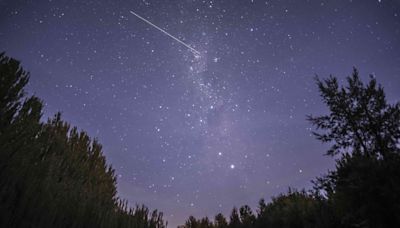Search results
Jan 12, 2021 · Stars and Galaxies Research at JPL. The nighttime sky is magical. The dark curtain sprinkled with tiny dots of light has inspired songs, sparked romances, and prompted humans through the ages to gaze at the twinkling scene overhead and wonder what’s out there and what it all means. Some of those humans are scientists and engineers at JPL, who ...
Jul 12, 2023 · Some stars in the image display telltale shadows indicating protoplanetary disks – potential future planetary systems in the making. A Full Year, Across the Full Sky From its very first deep field image , unveiled by President Joe Biden, Vice President Kamala Harris, and Nelson live at the White House, Webb has delivered on its promise to show us more of the universe than ever before.
The first stars formed maybe a few hundred million years after the Big Bang, and the peak of star formation occurred after 3 or 4 billion years. Galaxies are giant collections of stars and dark matter. Less than 10% of all the baryons (protons, neutrons, electrons — the kind of matter stars and we are made of) wind up in stars.
Jul 12, 2022 · The James Webb Space Telescope is the world's premier space science observatory. Webb will solve mysteries in our solar system, look beyond to distant worlds around other stars, and probe the mysterious structures and origins of our universe and our place in it. NASA Headquarters oversees the mission for the agency’s Science Mission Directorate.
The focus of the new study is an event called AT2021ehb, which took place in a galaxy with a central black hole about 10 million times the mass of our Sun (about the difference between a bowling ball and the Titanic).
Jun 24, 2020 · Neutron stars, or cores leftover from exploded stars, are some of the densest objects in the universe. There are several types of neutron stars, including magnetars and pulsars. NuSTAR is a Small Explorer mission led by Caltech in Pasadena and managed by NASA's Jet Propulsion Laboratory, also in Pasadena, for NASA's Science Mission Directorate in Washington.
Jul 2, 2024 · Its stars are located at a distance of about 1000 light years from us, and they formed about 200 million years ago. The cluster was discovered by Greek-Roman astronomer Ptolemy in the year 130, hence its other name. M6 is about half the apparent size of M7, and contains fewer stars. It's also a bit farther away from us, at around 1600 light years.
2 days ago · Jet Propulsion Laboratory. Have you been awed by views of desolate Martian Valleys, swirling storms above Jupiter, and the icy blades ringing Saturn? Then you have journeyed with NASA JPL spacecraft and rovers. Our missions have flown to every planet and the Sun in a quest to understand our place in the universe, and to search for the ...
NASA's Jet Propulsion Laboratory, the leading center for robotic exploration of the solar system.
The parent stars are smaller than our sun. One is 69 percent the mass of the sun and the other only 20 percent. Kepler-16b orbits around both stars every 229 days, similar to Venus' 225-day orbit, but lies outside the system's habitable zone, where liquid water could exist on the surface, because the stars are cooler than our sun.




